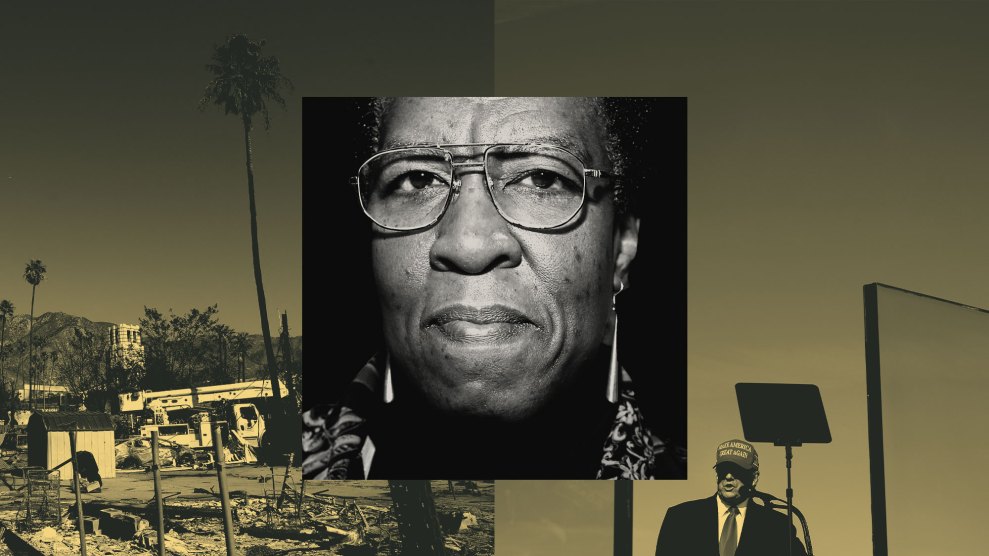Vail Resorts, Inc., had made a lot of enemies lately, and it seemed all of them were here this night. It was March 1998, seven months before a shadowy clique of arsonists took to Colorado’s Vail Mountain with matches and gasoline, and the biggest, most rancorous crowd in Eagle County Commission history packed the benches in front of the three commissioners. At least 300 locals, environmentalists, and animal rights activists had turned out on this chilly evening — the snow still 5 feet deep on Vail Mountain — to debate what the resort calls its Category III ski area expansion. Cat III, as locals call it, is the third phase in the ski company’s decades-old master plan and would develop a 2,200-acre area of Vail’s backcountry for skiing, including 700 acres of old-growth forest.
The area is a prime habitat for elk and the Canada lynx, the endangered bobcat cousin unseen in these parts for nearly 30 years. Opponents interested in preserving it for wildlife — among them Jeff Berman, a 29-year-old volunteer with the Colorado-based environmental group Ancient Forest Rescue (AFR), and Nicole Rosmarino, a 28-year-old doctoral candidate at the University of Colorado at Boulder and member of the radical group Rocky Mountain Animal Defense (RMAD) — wanted to stop the project, slated for construction after the elk calving season in June. Activists had repeatedly filed lawsuits on behalf of the lynx, but Forest Service officials had already ruled in favor of the development, leaving only the County Commission to decide how the project should proceed.
“This [expansion] has nothing to do with skiing!” Berman shouted when he got his chance at the microphone. Waving Vail Resorts’ annual report like a Bible-toting preacher, he reminded the crowd that the resort had recently purchased an option to develop a huge tract of private land just a mile from Cat III. “This is all about real estate,” he shouted as the crowd erupted in applause.
At the front of the room, a battalion of Vail Resorts lawyers and executives testily argued that Cat III was about improving snow quality and extending the ski season. But the crowd wasn’t buying it. And considering that the company signs the paychecks for more than 15 percent of the valley’s 30,000 residents and supplies them with free ski passes, their candor was impressive. As one local hotelier put it, explaining that he had yet to wait in a chairlift line that season, “Why do we have to build more terrain if we can’t even sell what we have?”
Others decried the jarring changes that had occurred since a group of Wall Street investors gained control of Vail Resorts in 1992. Their reorganized company had gobbled up two nearby ski resorts, replaced longtime local managers with outsiders, and taken the company public with a $266 million offering. Area business owners blamed their shrinking profits on Vail Resorts’ expanding retail presence. And growth-weary locals blamed the company’s burgeoning real estate division (part of its plan to increase revenues amid stagnating lift-ticket demand) for feeding a building frenzy of lavish trophy homes and private golf courses that had turned the valley into a 15-mile-long construction zone.
Citing one new development — a ski-in/ski-out subdivision asking as much as $4.6 million per home — a local seamstress angrily recalled that the forested hillside “used to be a prime calving area for elk; now it is a prime playground for the rich and famous.”
By itself, the terrain expansion would probably not have raised much ire. But at a time of unbridled growth and hectic preparation for the 1999 World Alpine Ski Championships (the most important ski competition next to the Olympics) the following January, Cat III seemed a symbol for all that was going wrong in Vail. And as the clock ticked down the hours to the championships, a series of bumper stickers betrayed the growing discontent: “Bail ’99,” “Evail,” and simply, “No More Fucking Rich People.”
Yet in the politically conservative, deeply entrepreneurial valley, there were plenty of people who felt differently. Although few of them showed their faces at the commissioners’ meeting, more than 3,000 had signed a petition favoring the expansion, which Vail Resorts officials presented to the commission. Armed with $2 million in wildlife studies, economic assessments, and environmental impact reports, which they piled 2 feet high on the commissioners’ tables, Vail Resorts made its case. In April, the commissioners unanimously voted to support the project.
Then, on the night of Sunday, October 18 — just as construction crews began clearing trees in the disputed area — some twisted souls climbed Vail Mountain. By morning, two huge plumes of smoke rising from the mountaintop signaled the most destructive act of environmental sabotage in U.S. history — causing more than $12 million in damage. Four ski lifts were damaged; the ski patrol’s headquarters and the lavish $5 million Two Elk Lodge were reduced to ashes.
Swarms of federal agents picked through the ruins, but the biggest clue arrived two days later in the form of a seven- sentence e-mail. It claimed responsibility for the fires and threatened further actions if construction on Cat III continued. It read, in part: “Putting profits ahead of Colorado’s wildlife will not be tolerated. This action is just a warning. We will be back if this greedy corporation continues to trespass into wild and unroaded areas. For your safety and convenience, we strongly advise skiers to choose other destinations until Vail cancels its inexcusable plans for expansion.”
The communiqué was signed by the Earth Liberation Front (ELF), an all-but-unknown band of radical environmentalists recently connected with the Animal Liberation Front (ALF), a militant animal rights group that has long sabotaged animal research labs, fur farms, and meat industry buildings. Believed by some to be one and the same, the two groups claimed joint responsibility for several attacks in 1997 and 1998, including the burning of an Oregon corral used to round up wild horses for slaughter; the arson of a U.S. Agriculture Department building where wild animals were allegedly euthanized; the release of mink from a Wisconsin fur farm; and the arson of the Oregon headquarters of U.S. Forest Industries. ALF’s Web site explains how to make firebombs with fuses made from gasoline-soaked sponges — the same peculiar devices investigators reportedly found evidence of in the Vail ashes.
As national TV reports flashed pictures of the Vail blaze and scrolled through ELF’s e-mail warning to skiers, spokespeople on both sides of the environmental movement warned of the arrival of a new, more belligerent chapter in the war over the nation’s dwindling wilderness. “The Vail action is an example of the new vanguard of warriors who aren’t intimidated by the government’s tactics,” said Rod Coronado, an Earth First! and ALF activist now serving time for helping to torch a Michigan animal lab. Ron Arnold, the founder of the anti-environmentalist Wise Use movement, agreed: “They’ve stepped over a line they’ve never crossed before. They’re also getting more professional. That troubles me a lot.”
For those who had waged the long legal battle against Cat III, the fire was more than just troubling. It was an outright disaster. For instead of setting fire to the backcountry construction so many here had opposed, the arsonists had vented their anger on the beloved ski mountain where Vailites work and play. Even worse, ELF’s warning to skiers made clear that the attack wasn’t only on the resort company, but on every skier in Vail. The resulting outrage flipped public opinion virtually overnight, fueling a backlash that reversed months of coalition building and turned every Cat III opponent into a potential suspect.
It was one of the most beautiful acts of economic sabotage ever in this state,” says Nicole Rosmarino of the fire. A self-proclaimed “bunny hugger,” the RMAD activist says she was “jumping up and down with delight” when she heard the news. After Cat III’s opponents exhausted every legal avenue, she says, “there was nothing left to do but break the law. I was ready to do acts of civil disobedience to slow down the loggers, but what transpired was more effective than anything I was prepared to do.”
A vegetarian since her college days in upstate New York, Rosmarino first joined the animal rights movement to protest the plight of lab animals. But she soon focused her efforts on wildlife “because those are the animals that still have a fighting chance,” she says. “I have absolute adoration, even quasi worship, for wildlife.” After moving to Colorado to earn a doctorate in public policy, she signed on as wildlife coordinator for RMAD. Unlike more traditional animal rights groups, RMAD prides itself on “linking environmental struggles with animal rights and human struggles” to create a new breed of animal rights/environmental activists. “I’m in that category,” she says proudly.
To Rosmarino, the Cat III fight seemed the perfect way to bridge the two movements. But bringing them together wasn’t easy. Although they shared a hatred of big business, the movements’ adherents felt little empathy for each other’s core causes. Animal liberationists like Rosmarino resented the tree huggers’ insensitivity to animals and reluctance to risk jail time, while more mainstream environmentalists like AFR’s Jeff Berman disagreed with the bunny huggers’ wacky morality and in-your-face tactics.
The two groups’ differences were in full view as they teamed up to parade through Vail last winter. While Berman used his megaphone to hammer away at Cat III’s real estate connection, Rosmarino and her boisterous RMAD friends yelled slogans such as “Extinction stinks! Save the lynx!” They soon passed a woman emerging from one of Vail’s fur salons wearing a mink coat. “You’d look a lot sexier without 65 dead animals on your back!” yelled an RMAD protester. A shouting match ensued, and the Vail police officers who were following the group with a decibel meter approached.
Berman winced. Afraid of alienating anyone who might prove sympathetic to his cause, he’d hoped to avoid mixing the fur and Cat III issues. “The guy was being hotheaded,” Berman says of the RMAD protester. To his disappointment, Rosmarino refused to calm down her combative friend. “I had no problem with RMAD activists telling that lady off,” she recalls. “That’s why the lynx are in the shape they’re in. And I’m disappointed in environmentalists who can’t see that.”
Yet as Cat III moved closer to reality, she and Berman needed each other more than ever. The U.S. Fish and Wildlife Service had repeatedly declined to consider giving the lynx endangered status, declawing the activists’ legal maneuvers to stop construction on the animal’s behalf. Without the listing, lawsuits accusing the Forest Service of failing to adequately measure Cat III’s environmental impact went nowhere, leaving only the County Commission to block construction.
So while Rosmarino and her RMAD friends focused on the plight of the lynx, Berman helped orchestrate a series of community meetings that hammered on the impact of the resort’s growth-worsening housing and labor shortages, skyrocketing rents, and sprawling development.
The parallel efforts helped fill the bleachers at the commissioners’ hearings. But in the end, they failed to sway the decision-makers. In September, with construction imminent, opponents gathered in Berman’s living room to consider their dwindling options. They’d already begun efforts to hit Vail in its wallet, pushing the local university to end student bus service to the resort and drafting an open letter to ski clubs nationwide asking those visiting Vail to boycott Vail Resorts-owned properties.
Now it was time for civil disobedience, for which they had trained by role-playing arrest scenarios and practicing tree climbing, road blockades, and other protest techniques. They even set up a base camp near the mouth of the valley leading to the Cat III construction site in order to monitor its progress, store food and other supplies, and scope out the best trees to climb in protest. As for more aggressive tactics, the group adopted an informal code of nonviolence, but agreed that individual members would have to decide for themselves what was appropriate.
But construction was delayed by another last-gasp legal appeal, and by the time the court ruled against it a month later, few were left to carry on the fight. As bulldozers passed through Cat III’s entrance on Friday, October 16, Berman tried desperately to organize a protest in front of Vail Resorts’ headquarters but abandoned the plan after gathering barely 10 people.
Then all hell broke loose on Vail Mountain two days later. And as federal agents and journalists investigating the fire bore down on all of Cat III’s opponents, the coalition Berman and Rosmarino once hoped to cement seemed to crumble. While Rosmarino lauded the arsonists as “heroes,” Berman’s camp angrily denounced the perpetrators as “criminals and terrorists.”
And as most Cat III opponents desperately tried to distance themselves from the arsonists, Rosmarino lashed out at the tree huggers’ spinelessness. “This was not terrorism — it was economic sabotage. And it did more for the cause than anything that came before it!” she says. “The reaction from those who purport to speak for wildlife is really a reaction of fear. If they don’t have the courage to light the match, that’s fine. But to attack those who did is sheer hypocrisy.”
Ever since Edward Abbey’s novel The Monkey Wrench Gang inspired radical groups like Earth First! to take environmental matters into their own hands, a sporadic guerrilla war of “ecotage” has targeted mining, logging, and electric power companies in the Western states. The monkey-wrenching actions peaked in 1989 when a group of activists conspired to cut the power lines to a plant in Arizona. The FBI had launched a two-year probe, infiltrating the group prior to the Arizona assault, and the resulting arrests “pretty much beheaded the radical environmental movement,” says Susan Zakin, author of Coyotes and Town Dogs: Earth First! and the Environmental Movement. With the 1989 arrest of Earth First! founder Dave Foreman and four other activists, Zakin says, “people realized that if they called themselves Earth First!ers, they might as well have an ‘Arrest Me!’ sign on their back. It sobered them up.”
Meanwhile, North American animal liberation groups like ALF were stepping up their attacks and soon called for a coming together of the animal liberation and radical environmental movements in publications such as Earth First! Journal. In 1996, a group calling itself the ELF began claiming responsibility for attacks on fur farms and government facilities — not just in the name of individual animals but on behalf of the entire ecosystem.
Leading the call to join forces is Coronado, who keeps tabs on the Cat III fight from the Arizona prison where he is finishing his 57-month sentence. The 32-year-old Yaqui Indian believes the Cat III fight is a microcosm of the larger movement. “It’s an example of the power wielded by corporations…against animals and the environment,” he says. “In the Northwest, it’s the timber industry. In the Midwest, it’s the livestock industry. And in Colorado, it’s the ski industry. Even though it’s based on recreation, people are realizing that it’s just as exploitative as the timber industry — so it’s an excellent example for the younger generation, [which] now finds itself holding the reins of the environmental and animal liberation movement.”
Younger indeed. Although no ELF member has ever been caught, or even stepped forward from the shadows, the group’s ALF brethren who have been implicated in sabotage efforts are barely adults. Those arrested and convicted in Utah for the 1997 firebombing of a fur farm cooperative ranged in age from 19 to 24. “It’s my generation,” says David Wilson, a 21-year-old ALF spokesman who first broadcast the group’s claims of responsibility for the Utah fire. He and his peers read The Monkey Wrench Gang in high school — a book that has led a new generation of monkey-wrenchers “to break the law to make their point,” says Wilson. “We started with animal rights, but we’ve expanded to wildlife actions like the one in Vail. We’re the ones bridging the environmental gap.”
Jeff Sarnacki knows the type all too well. “This is definitely the cause du jour,” says the special agent with the Bureau of Alcohol, Tobacco, and Firearms in Salt Lake City who has investigated a string of ALF-linked arsons and bombings in Utah since 1991. “They pick it up in junior high and high school. They become vegetarians, and they get involved in protests like Fur-Free Fridays. But they get disillusioned with the protesting and picketing, and some decide that enough is not enough and they take it to the next step.” While some are deep believers, he says, others “are just everyday kids looking for something to do. Some kids are into computers — and some are into this.”
And some are into both. With sophisticated Web site primers detailing everything from how to make firebombs to encrypting e-mail to staking out targets, ALF has fashioned the ultimate dis-organization — an amorphous collection of radicals whose beliefs and Internet connections are the only things that bind them together. On ALF’s Web site, under FAQs, those wondering how to join the group are told that “someone ‘joins’ the ALF simply by doing ALF actions.” The site posts detailed diaries of past sabotage, imploring potential adherents to take matters into their own hands.
“I, too, desperately wanted to join this group,” writes a young woman who claims to have sabotaged a fast-food restaurant. “At one point, I wrote an animal rights group letting them know I would be willing to help them raid an [animal testing] lab. Needless to say, that letter went unanswered. … Would anyone who put hundreds of hours in[to] planning a covert, illegal direct action that could land them in prison for years [risk] asking a basic stranger for help simply because he or she is a vegetarian or belonged to a local animal rights chapter? No! So how did I, or how do you, end up joining the ALF? That’s easy! Come up with your own plan!”
Once they’ve carried out an action, perpetrators send an anonymous e-mail or fax to self-appointed ALF/ELF spokespeople such as Katie Fedor in Minnesota, or Craig Rosebraugh in Portland, Oregon, both of whom spoke to the press about the Vail fires. Before including the action among the group’s list of successful attacks, they first verify that no one was hurt by the crime. “Nonviolence is really the crucial criteria,” Fedor says.
The resulting nearly structureless network has confounded law enforcement agencies. “It’s like they cribbed from Mao Tse-tung’s writings on guerrilla warfare,” says Gary Perlstein, a criminology professor at Portland State University who has studied the groups extensively. “Mao talked about the three-person cell, and how this was an ideal organization to confound the government.”
Arson investigators are quick to note that virtually anyone could have set the fires and shifted blame on the radical groups by e-mailing Fedor with a claim of responsibility. But Fedor and Coronado say they don’t care who the actual perpetrator is. “We welcome the use of the names ALF and ELF by anyone,” says Coronado, “whether it’s someone who wants to save the lynx, or some Vail local who’s frustrated with the corporate takeover of the community.”
That leaves cops with “a big basketful of worms,” says Eagle County sheriff A.J. Johnson, who oversees the local investigation. “It’s been overwhelming,” he says. “It’s not just ELF. …There’s all kinds of weird splinter groups out there, and that’s just one tunnel to follow. There’s been a lot of changes up and down this valley. Frustration levels are up. We’ve got hundreds of e-mails and letters complaining about development. So you’ve got to look at the disgruntled employee and angry local concepts, too.”
Federal authorities have refused to comment on the ongoing investigations, but they’ve clearly stepped up efforts to break the radical groups. But unlike the government’s earlier success at infiltrating Earth First!, “the FBI is starting late this time,” says Perlstein. Instead of going undercover, investigators have had to target aboveground activists. In January, they reportedly issued a rash of subpoenas, calling at least one Ancient Forest Rescue member to testify before a grand jury. But while such efforts may one day yield them a prosecutable suspect, “they’re basically powerless to prevent anything unless they can infiltrate them,” Perlstein says.
By the time the fires burned themselves out late that October afternoon, the local opposition to Cat III had largely evaporated. Vail officials had hastily convened a pep rally, and Vail Resorts’ silver-haired president, Andy Daly, made sure everyone knew who the new enemy was. The arson “was perpetrated by outsiders, those who don’t share our values, who have forced their values on us and know no compromise,” he told the overflowing crowd. “We will rise again and be all we can be! Let people know the strength of this valley, the strength of Vail Resorts, and how we will come together.”
A sobering slide show of the devastation only strengthened the crowd’s anger, and in the weeks following the fires some locals even offered to rebuild the patrol headquarters in an Amish-style barn raising. (Indeed, Vail did survive — handily. By the eve of the 1999 World Alpine Ski Championships, work crews had repaired all of the damaged lifts and a blanket of fresh snow had hidden any sign of the fire’s violence. Moreover, the insurance-funded plans for rebuilding the Two Elk Lodge will allow Vail Resorts to expand the opulent, 33,000-square-foot structure by nearly one-third.)
Cat III’s opponents were left to lash out not at the project’s construction, but at the arsonists. While supporters of Vail Resorts cheered Daly, Berman gathered with a somber group for a candlelight vigil at the resort’s clock tower. Under a banner reading “Ancient Forest Rescue, No Violence — No Cat III,” they clutched white candles and tried to explain their feelings. Reading from a prepared statement, Berman defended his opposition to Cat III.
“If the individuals who did this can somehow hear me, I say, ‘Get the hell out of Colorado! Indeed, vanish altogether! Just go away!'” Berman told the group, which included several TV and newspaper reporters. “Your actions have only created sympathy for Vail Resorts at a time when they are undertaking one of the largest logging operations in Colorado.”
But he was preaching to the converted. And as a man shouting “No more fires! No more fires!” approached the group, it became painfully obvious that local sentiment had turned irrevocably against Berman and the Cat III opponents. “Did it ever occur to you that all these little fires you are holding are a really bad symbol?” the heckler asked. “We’ve already had enough big fires. We don’t need to be reminded of them with a bunch of little ones. Why don’t you just blow them out and go away?”
Scott Willoughby contributed research to this article.
















